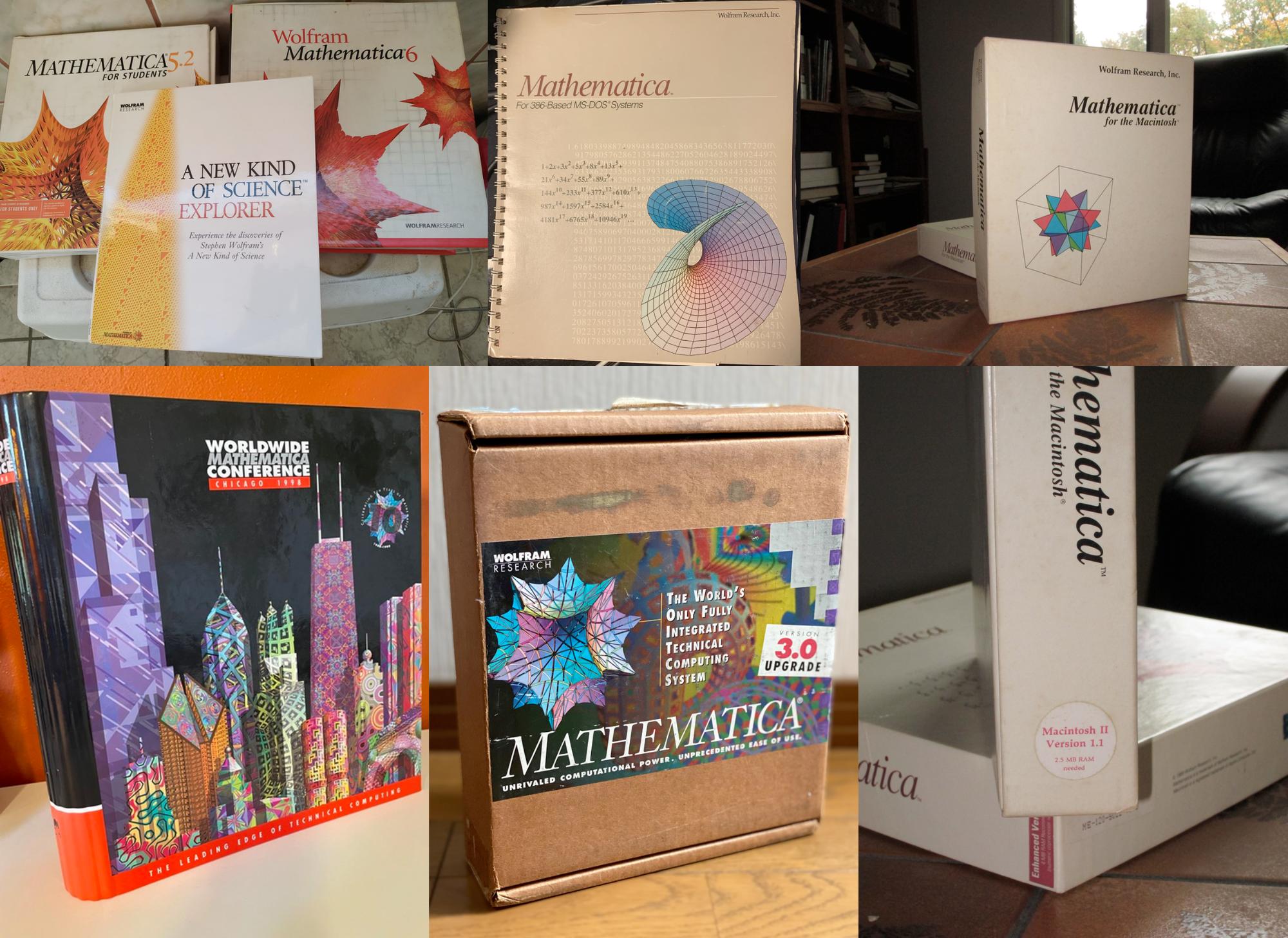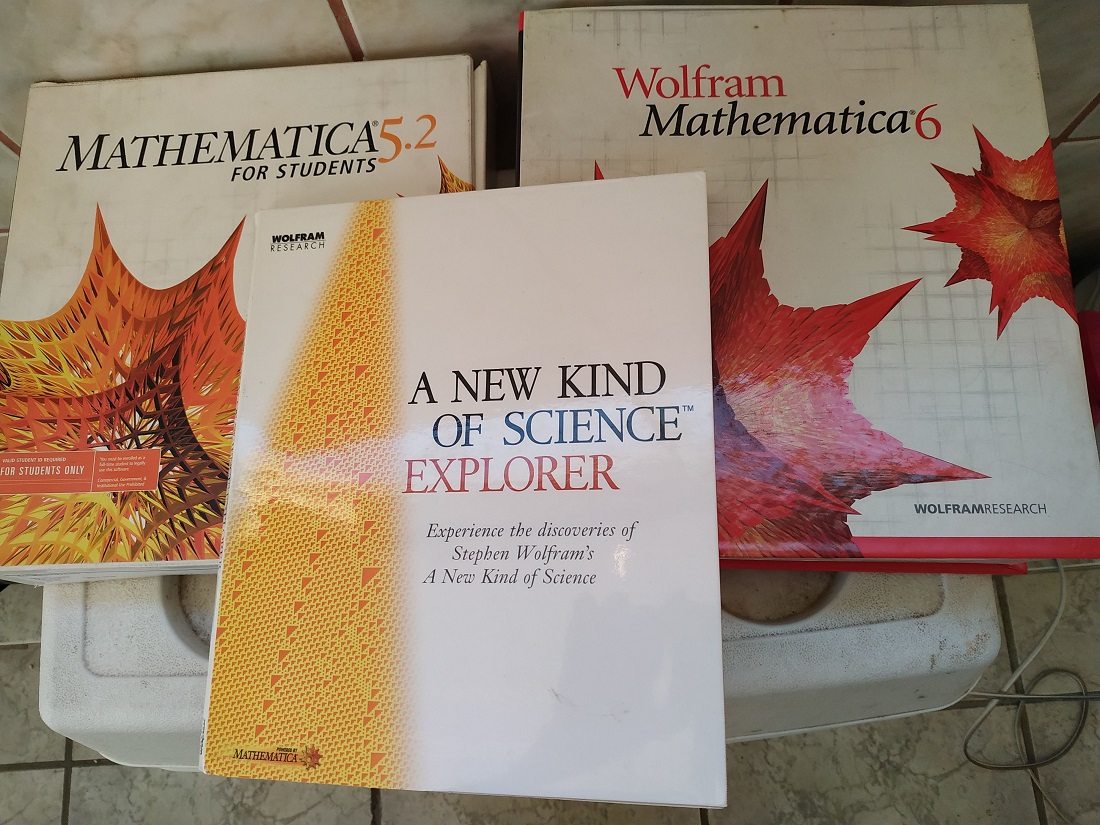MODERATORS' NOTE: We will be displaying the collage of people's images at the top of this discussion. Dear all, please, do post the images of Wolfram things dear to your memories here :-) Thank you, Daniel Carvalho, for a delightful question!

Today installing Mathematica 12.3 I notes that there are previous versions installed too in my Linux box:
daniel@home:/opt/Wolfram/Mathematica$ ls -l
total 28
drwxr-xr-x 7 root root 4096 nov 20 2014 10.0
drwxr-xr-x 7 root root 4096 ago 14 2016 11.0
drwxr-xr-x 7 root root 4096 abr 26 2017 11.1
drwxr-xr-x 7 root root 4096 jun 26 2020 12.1
drwxr-xr-x 7 root root 4096 jan 12 23:20 12.2
drwxr-xr-x 3 root root 4096 mai 13 13:23 12.3
drwxr-xr-x 7 root root 4096 ago 19 2013 9.0.1
It is interesting to see that the older version is around 9 in 2013, and the years of installation for the other releases, according my folders.
In fact my first version of Mathematica was 4.0 (1999), for calculus classes in college.
In Computer Engineering that time we had 5 semesters of calculus classes, and just the last one we went to the lab to make some more interesting projects applying the theory to practical experiments. The basic calculus classes usually ware just whiteboard, pen and paper, book and exercises. A very traditional engineering college.
It was interesting getting the last exercises from lists, the most complex cases, and have it solved immediately!!
I can recall that version 6.0 was the most interesting for me, I have used it at master degree. Since version 6.0 I have been publishing lots of Demonstrations with the Manipulate function, it is really fun! It got my playing video game timing! :-)
In my parents house I found this boxes with my old college stuff:

I went to the Wolfram Summer School in 2007 while back in college for the Master in Electrical Engineering, and latter again in 2011 for a new research about NKS computational principles.
Latter on I get certified, Wolfram Certified Instructor
Since 2013 I have been organizing the Wofram conference in Brazil with Mackenzie University team and other friends, by my installations dates, I have used 9.0.1 at the first conference here. In 2021 and 2020 the conf is virtual for safety (remote): https://www.wolfram.com/events/virtual-conference-br/2020/
And now I am very excited with 12.3!!
The Mathematica versions history is available at: https://www.wolfram.com/mathematica/quick-revision-history.html
What was your first Mathematica version??